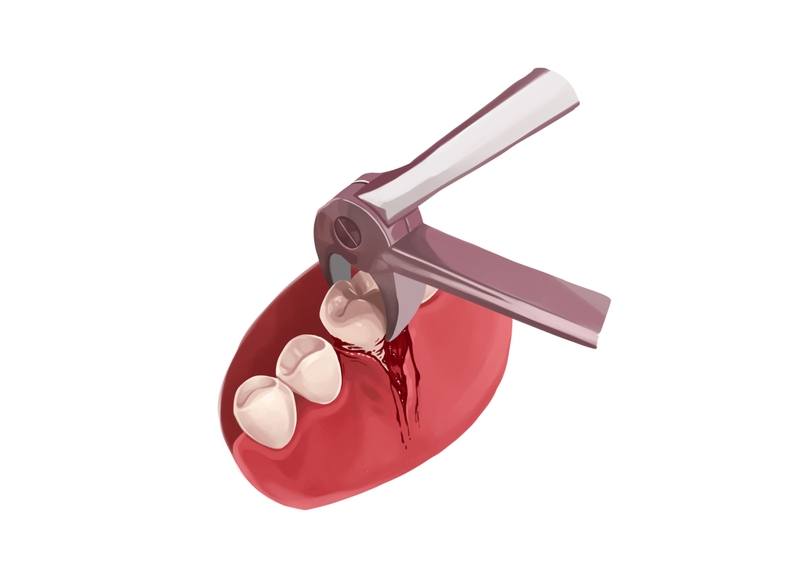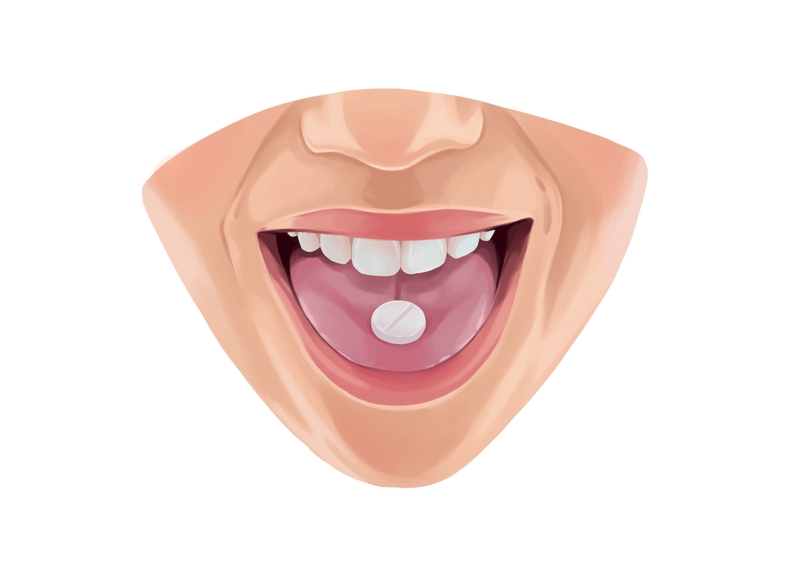- Stop bleeding and swelling by using gauze pads or absorbent bandages and cold packs. Avoid smoking and drinking alcohol for at least the first two weeks after extraction.
- Eat soft foods and drink cautiously for the first week to avoid dislodging the blood clot and to promote healing. Reduce pain with prescribed medications and home remedies such as ice packs and cold compression.
- Maintain good oral hygiene by brushing and flossing carefully. Take time to rest and avoid excessive physical activity for the first 48 hours.
You can count on us in case of dental emergency. Find local dentists open now with Authority Dental. We have over 1,500 locations and we're open 24 hours a day.
Curious about the best practices after tooth extraction? Here's everything you need to know.
Control bleeding and swelling

Picture by Authority Dental under CC 2.0 license
Forming a blood clot is the first goal of the recovery process. The first couple of days after a tooth removal will be when the majority of the healing and closing of the wound takes place. You can expect to see minimal bleeding from the gums. To absorb the blood from the wound, a gauze pad is recommended. Tea bags or other absorbent pads could be used as an alternative.
To reduce swelling, use cold packs to both lower the inflammation and to numb the area.
Avoid smoking and alcohol
It might be common knowledge, but it must be stated that smoking after an extraction is not allowed for at least two weeks. Smoking produces toxic compounds that can interact with an open wound, causing pain and excessive bleeding. In addition, the inhalation force you use while smoking creates undue pressure on the area, which can dislodge the clot.
Alcohol also increases the risk of a dry socket and should be avoided until after the first week.
Eat soft foods and drink carefully
An oral surgeon will advise a healthy, balanced diet to help the body heal, but it is important to note the consistency of food for the first week. Due to the tenderness, it is highly recommended to avoid solid foods, as well as foods with small particles. For the first week, softer foods will be best for keeping the area clean.
Foods you might try include:
yogurt,
smoothies,
protein shakes,
applesauce,
mashed potatoes,
scrambled eggs,
oatmeal,
cottage cheese,
broth-based soups.
Try to eat a mixture of foods so that you get adequate nutrition. Eat foods that have plenty of protein and fiber. Of course, ice cream and milkshakes are perfectly acceptable foods as long as they're eaten in moderation.
Be sure to drink plenty of liquids and stay hydrated to increase cleanliness and encourage the recovery process. Actions such as sucking through a straw or eating hard and crunchy foods will strain the gums and need to be eliminated.
Minimize pain

Picture by Authority Dental under CC 2.0 license
It is not unusual for the dentist to prescribe some medication to manage the pain levels for the first couple of days. Common pain prescriptions include Tylenol #3, Norco, Hydrocodone, Lortab, and Percocet. After a couple of days, the discomfort will subside to a point that over-the-counter medicine will be sufficient. Avoiding contact to the site will reduce the chances of severe pain and dislodging any healing completed thus far.
Ice packs and cold compression to the area are some home remedies for reducing pain and swelling.
Maintain proper oral hygiene
Maintaining proper oral hygiene goes a long way in regards to the healing process. In the first few days following surgery, the gums are at their greatest vulnerability. That's why performing extra dental care is important - floss to prevent small particles from reaching the gums, drink plenty of water, and replace the gauze as needed.
Cleaning of the wound with warm water or salt water is also recommended. Salt water will help with the healing process, but you should not begin rinsing until the second day of recovery. Use eight ounces of water with 1/2 teaspoon of salt and swish carefully. This may be every few hours to a few times a day. Do not use over-the-counter mouthwashes as most of them contain alcohol.
Brush and floss like normal, but avoid the area of extraction for the first couple of days. You should still brush all of your remaining teeth, just do so carefully.
Take time to rest
The body needs rest to recuperate and heal. High physical activities may cause strain on the gums, so you should minimize excessive activity for at least the first 48 hours. When at rest, elevate your head at night to promote the flow of blood to the tooth extraction site.
Book a control appointment

Picture by Authority Dental under CC 2.0 license
In some cases, it may be necessary to have a follow-up appointment. However, that is not often the case. If there is still severe bleeding from the site after one day, be sure to contact your dental office. You should also call if you are experiencing pain outside of slight discomfort as you may have a dry socket.
More concerning symptoms include fever, chills, vomiting, pain into your ear, difficulty breathing, chest pain and drainage from the wound. If you experience any of these symptoms, contact your dental office right away. Even if you have these symptoms after hours, there should be an emergency contact that your office uses for situations such as these.
If you didn't talk about it before the extraction, you can also use a follow-up appointment to discuss what treatment options you have to replace the missing tooth. As the area heals, you can take the time to consider all options and decide which one is best for you.
FAQ
Why is tooth removal aftercare important?
Should I brush and floss the site of the extracted tooth?